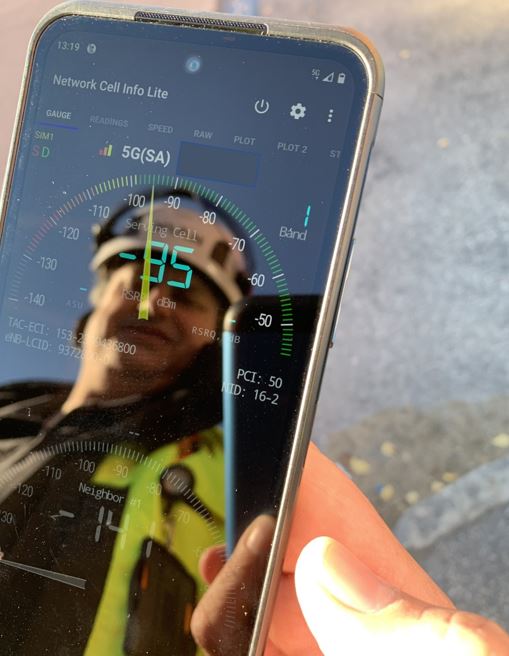Combitech, a Nordic tech solution, and consulting partner, is delivering the first private 5G network, with indoor- and outdoor coverage, in Sweden. The network connects the unloading area of the mill with the port of shipment in Skärnäs. This is the first step to connect the entire operations at the Iggesund Mill, and more areas will be included to secure the position as the most efficient and reliable mill in Sweden.
Why are we installing 5G right now?
Efficient, sustainable, and secure
The private 5G network will, as a start, address challenges related to communication and transport between Iggesund Mill and the port of shipment in Skärnäs. The network will allow extremely fast, zero-to-no latency wireless communication between the different systems connected to the transports. Improved reliability and stellar connectivity make sure Holmen Iggesund runs the smoothest, most secure, and most energy-efficient transport operations. Minimizing unnecessary transport and consequently reducing the use of fuel will also make the mill more sustainable.
The Iggesund Mill already has a sustainable production process, with a low carbon footprint, due to heavy investments in mill energy systems over the past decade. Transport is one of the areas where Iggesund can improve, making the investment in 5G with this focus as a start even more important. Improving transport efficiency and the long-term transition to non-fossil are key areas for the future.
With the 5G network in place, it is possible to better track and analyze transport movements, decrease risk, save energy and analyze the entire mill operation going forward.
Another important aspect is cyber security. The private 5G network enables a much more secure communication and connection between various applications.

Image Credit: Holmen Iggesund
“We at Holmen Iggesund have always been ahead of our time, whether it’s related to reducing carbon footprint or making sure we have the latest technology”, says Johan Nellbeck, CEO at Holmen Iggesund. “This is entirely in line with our strategy to be one of the most efficient and sustainable mills. To get there, we need the best partners, and with the 5G network together with Combitech, we take a big leap into the future.”, he continues.

Image Credit: Holmen Iggesund
“Connecting the Iggesund paperboard Mill with 5G is a very exciting “smartification”. We are, of course, very proud to get this going together with Holmen Iggesund, and we look forward to working closely together to identify and implement all the digital services that this network enables”, says Jessica Öberg, CEO at Combitech.
Future 5G-expansion
This is the first step of a roadmap to make sure Iggesund Mill stays the smartest and most efficient mill in Sweden. And the private 5G network can offer immense possibilities for improving mill operations in the future.
Peder Hägglund, Head of technology, project & IT at Holmen Iggesund, is very optimistic about the opportunities with 5G in place.
“This is just a first test to solve a real day-to-day problem, but I am even more excited about what we will be able to do in the future. 5G makes it possible to get mobility for our IT- and OT-system and with wireless sensors, we can measure and analyze almost anything! With great data comes the knowledge that gives us a good direction on what to improve. It could be process stability, quality, security, troubleshooting, and many other areas, the sky is the limit!”, Hägglund concludes with a smile.

Image Credit: Holmen Iggesund


































